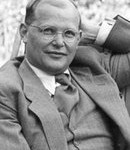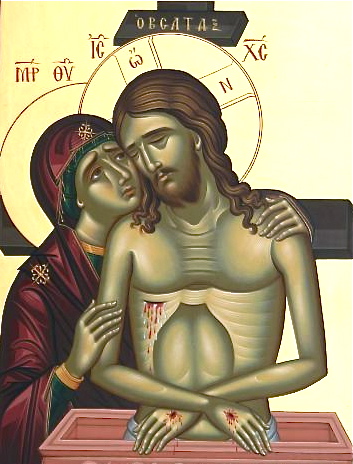
There is a word that appears in the hymnography of the Church which is prominent in Great Lent and in Holy Week. That word is stavrotheotokion. If we look at this compound word and break it down to its component parts we can recognize a couple of fairly familiar Greek words, Stavro – Greek for cross and Theotokos, the Mother of God. Now, we can connect the concepts The Theotokos and the Cross. The Stavrotheotokion is a troparion (short hymn with a theme usually sung after a verse of psalm), which is a manifestation of true human emotions. It is a poetic expression of the pain, sorrow and astonishment of a mother beholding her Son and her God on the Cross. These verses of theology and tenderness are heard in many of the services of the Great Lent, but reach their zenith in the services of the Holy Passion. The Theotokos expresses the wonder of us all. The awe, which could only be articulated by a mother who has kept a secret for many years (“and his mother kept all these things in her heart” Luke 2, 51). The identity of her Son as the incarnate God was known the Theotokos since the Annunciation. Now at the Cross she suffers a new mystery, the inscrutability of her Son and Creator taking on death by His own free choice. Each of these verses proclaims the truth of Christ’s condescension.
…”Woe is me beloved Child, light of my eyes! Thou has hung the earth above the waters, how can you endure to be nailed upon the Tree between two evildoers.” – Vespers of Tuesday in the Third Week.
Nonetheless, the Virgin stands by the cross, hour by hour true to her mission to intercede for the entire world. Her pain is palpable. Her lament is moving and yet there is true nobility in her devotion. When all the disciples, except John the Beloved, had fled because of their fear, she and the other women stood there unafraid. St. Romanos the Melodist has captured her grief and her consolation in a kontakion (a combination of troparia of the same structure, connect alphabetically or acrostically) used on Great and Holy Friday. As we, the Church prepare for Holy Week and the revelation of the pain and suffering of Christ, Our Lord and God we will also be reminded of the deep sorrow of His mother as she stands by the Cross with pain in her heart and tears in her eyes. The dialogue between the Theotokos and her Son becomes the revelation of God’s plan of salvation in poetry. This kontakion is lyrical theology, the stavrotheotokion with the voice of response by our Crucified Lord. Christ assures the Theotokos just as she witnesses his hanging on the Cross, she would receive the grace of being the first to see His glorious resurrection.
“Courage, Mother because you will see me first on my coming from the tomb. I am coming to show you by how many toils I ransomed Adam and how much I sweated for his sake. I shall show it to my friends by showing the marks in my hands and then you will see Eve, Mother, living as before, and you will cry out with joy: ‘He has saved my forebears, my Son and my God.’*
*(St. Romanos the Melodist. On the Life of Christ: Kontakia. Translated by Archimandrite Ephrem Lash. Edited by Kerry Brown, The Sacred Literature Series. New York et al.: HarperCollins Publishers, 1995, p. 148).
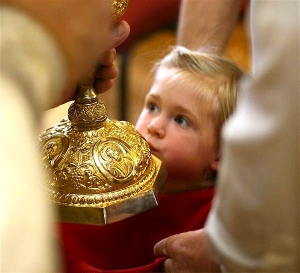

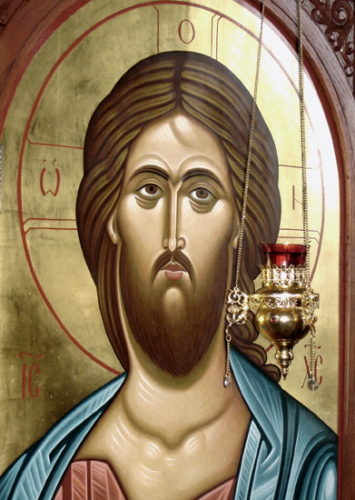


 Today, I would like to talk about silence. As I was growing up, my parents always referred to the Friday before the Saturday of Lazarus – as the “Silence (oi koufi)”. I always thought this was because the Akathist had finished and there wasn’t a service that night. Ok, there was silence. Now, I look at this a bit more deeply. If you remember a few years ago, there was this movement to help young people make better decisions by using the question, “What would Jesus do?” As I recall, there were even little rubber bracelets with the letters “WWJD” on them. In this case this is the question that should be asked. The Gospel reading of the Raising of Lazarus, (John 11, 1 – 45) begins with Jesus apparently hesitating to go to his friend’s aid. Well, this supposed hesitation had a real purpose, for all to see the glory of God. How was this to be accomplished? Our Lord seemingly was blasé about Lazarus’s illness and rushing to his side. After staying put for two days, Jesus prepared to go to Bethany informing His disciples that Lazarus was dead. As Jesus encountered Martha and Mary, they expressed thoughts that we all feel at sometime, “if only.” They were sure that if only Jesus had been there Lazarus wouldn’t have died, but Jesus was silent and missing. For us to truly understand Jesus’ hesitation, we need to know a bit about the Jewish teaching concerning death. At day four, in the Jewish understanding, the soul left the body in other words the body was a cadaver, a corpse. So if Lazarus was a corpse, Jesus did not simply resuscitate him. As Jesus called forth Lazarus and Lazarus walked out of his tomb Christ created life from dead matter. The Creator God bestowed life on Lazarus. Christ is God and the silence of Lazarus’ tomb was shattered. To the assembled crowd this silence was deafening.]]>
Today, I would like to talk about silence. As I was growing up, my parents always referred to the Friday before the Saturday of Lazarus – as the “Silence (oi koufi)”. I always thought this was because the Akathist had finished and there wasn’t a service that night. Ok, there was silence. Now, I look at this a bit more deeply. If you remember a few years ago, there was this movement to help young people make better decisions by using the question, “What would Jesus do?” As I recall, there were even little rubber bracelets with the letters “WWJD” on them. In this case this is the question that should be asked. The Gospel reading of the Raising of Lazarus, (John 11, 1 – 45) begins with Jesus apparently hesitating to go to his friend’s aid. Well, this supposed hesitation had a real purpose, for all to see the glory of God. How was this to be accomplished? Our Lord seemingly was blasé about Lazarus’s illness and rushing to his side. After staying put for two days, Jesus prepared to go to Bethany informing His disciples that Lazarus was dead. As Jesus encountered Martha and Mary, they expressed thoughts that we all feel at sometime, “if only.” They were sure that if only Jesus had been there Lazarus wouldn’t have died, but Jesus was silent and missing. For us to truly understand Jesus’ hesitation, we need to know a bit about the Jewish teaching concerning death. At day four, in the Jewish understanding, the soul left the body in other words the body was a cadaver, a corpse. So if Lazarus was a corpse, Jesus did not simply resuscitate him. As Jesus called forth Lazarus and Lazarus walked out of his tomb Christ created life from dead matter. The Creator God bestowed life on Lazarus. Christ is God and the silence of Lazarus’ tomb was shattered. To the assembled crowd this silence was deafening.]]> 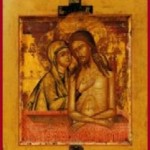 [/caption]
[/caption]
 [/caption]
“Courage, Mother because you will see me first on my coming first from the tombs. I am coming to show you by how many toils I ransomed Adam and how much I sweated for his sake. I shall show it to my friends by showing the marks in my hands and then you will see Eve, Mother, living as before, and you will cry out with joy: ‘He has saved my forebears, my Son and my God.’*
*(St. Romanos the Melodist. On the Life of Christ: Kontakia. Translated by Archimandrite Ephrem Lash. Edited by Kerry Brown, The Sacred Literature Series. New York et al.: HarperCollins Publishers, 1995, p. 148).]]>
[/caption]
“Courage, Mother because you will see me first on my coming first from the tombs. I am coming to show you by how many toils I ransomed Adam and how much I sweated for his sake. I shall show it to my friends by showing the marks in my hands and then you will see Eve, Mother, living as before, and you will cry out with joy: ‘He has saved my forebears, my Son and my God.’*
*(St. Romanos the Melodist. On the Life of Christ: Kontakia. Translated by Archimandrite Ephrem Lash. Edited by Kerry Brown, The Sacred Literature Series. New York et al.: HarperCollins Publishers, 1995, p. 148).]]>
 [/caption]
Our prayer should be: “O my God, here is my hand!”]]>
[/caption]
Our prayer should be: “O my God, here is my hand!”]]> 